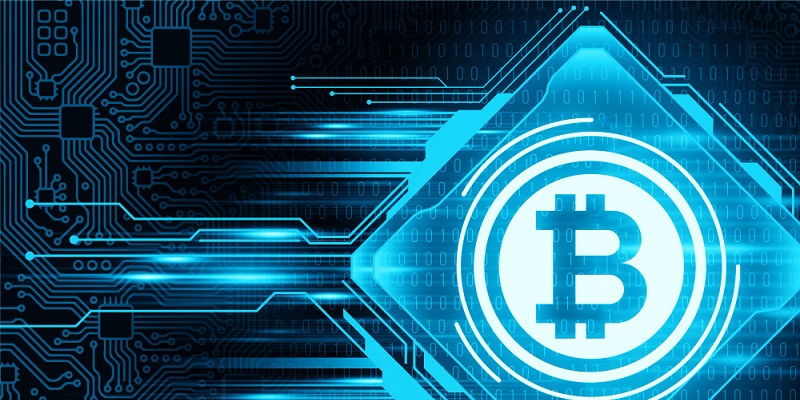In today’s rapidly evolving digital landscape, the potential of emerging technologies is gaining significant attention. Among them, artificial intelligence (AI) and blockchain stand out as transformative forces with immense promise. This article explores their trajectories, encompassing long-term demand, accessibility, functionality, public perception, environmental concerns, affordability, and regulatory needs.
Integration of AI Across Sectors
Artificial intelligence has witnessed remarkable evolution and integration across various sectors. Its applications span from healthcare and finance to transportation and entertainment. AI’s ability to automate processes, analyze vast amounts of data, and make intelligent decisions has revolutionized industries. From chatbots and virtual assistants to machine learning algorithms and predictive analytics, AI has already made substantial contributions. Moreover, the potential of AI is far from fully realized, suggesting that it could find its way into virtually any industry, pushing boundaries even further.
Blockchain’s Potential for Secure Records
On the other hand, blockchain technology offers secure, transparent, and tamper-proof records. By implementing cryptographic techniques and a distributed network, blockchain ensures data integrity and transparency. Its potential benefits extend beyond finance, with applications in supply chain management, healthcare, voting systems, and more. The decentralized nature of blockchain ensures that records cannot be easily altered or manipulated, thereby enhancing trust and security.
Accessibility Advantage of AI
While both AI and blockchain offer significant promise, AI enjoys an accessibility advantage. User-friendly interfaces and intuitive platforms have made AI-driven technologies accessible to many users. From voice-activated virtual assistants to AI-powered mobile apps, interactions with AI are becoming increasingly seamless and ubiquitous.
AI’s Diverse Range of Functions
One of AI’s greatest assets is its immense capability. AI encompasses a diverse range of functions, from machine learning and natural language processing to computer vision and robotics. As AI advances towards artificial general intelligence (AGI) – the ability to understand, learn, and apply knowledge in a manner comparable to humans – its potential applications become even more extensive. This broad scope of functions gives AI a significant advantage over blockchain in terms of versatility.
Public Perception and Impact
The accessibility and potential for broad impact of AI have contributed to a more positive public perception. AI’s contribution to personalized recommendations, improved healthcare diagnostics, and enhanced customer experiences has garnered widespread appreciation. However, blockchain’s impact on the public eye is not as prominent. While blockchain’s potential is substantial, its applications are often associated with cryptocurrencies, which can lead to misconceptions about its true potential and benefits.
Environmental Concerns
Both AI and blockchain technologies come with environmental concerns related to energy consumption. AI, particularly deep learning models, require significant computational power, thus consuming substantial amounts of energy. Similarly, blockchain consensus algorithms, such as proof-of-work, demand significant computational resources. Addressing these environmental concerns necessitates proactive measures from technology companies, such as optimizing algorithms and exploring energy-efficient alternatives.
Accessibility and Affordability
Both AI and blockchain technologies are accessible through pre-built apps or Software-as-a-Service (SaaS) products. However, AI tends to be more affordable and widespread due to its user-friendly interfaces and the availability of ready-to-use applications. In contrast, blockchain’s adoption is often hindered by its complexity, making it less accessible to a broader user base.
Regulation for Risk Management
As AI and blockchain technologies continue to evolve and find new applications, regulations become crucial to address risks and manage their potential for misuse. Balancing security and decentralization requires a finely-tuned regulatory framework. With AI, considerations about privacy, bias, and accountability are essential, while blockchain needs regulatory measures to address fraud, intellectual property rights, and the potential for illegal activities. Striking the right balance ensures the responsible and ethical deployment of these technologies.
Attention and Support
AI’s continuous evolution draws significant attention and support from developers, tech companies, and end-users alike. Funding for AI research and development continues to pour in, reflecting its immense potential. In contrast, blockchain’s growth has been somewhat overshadowed by AI’s rapid expansion. Nonetheless, as blockchain technology matures and gains more credibility, it is expected to garner increased attention and support.
Artificial intelligence and blockchain technologies are poised to shape the future across multiple sectors. While AI’s integration across industries highlights its transformative impact, blockchain’s potential for secure and transparent records paves the way for innovation and greater trust. Both technologies hold promise, but their trajectories will depend on factors such as long-term demand, accessibility, functionality, public perception, environmental concerns, affordability, and regulatory frameworks implemented. As these technologies mature and overcome challenges, AI and blockchain will undoubtedly revolutionize industries and play significant roles in shaping a more efficient and secure digital future.

